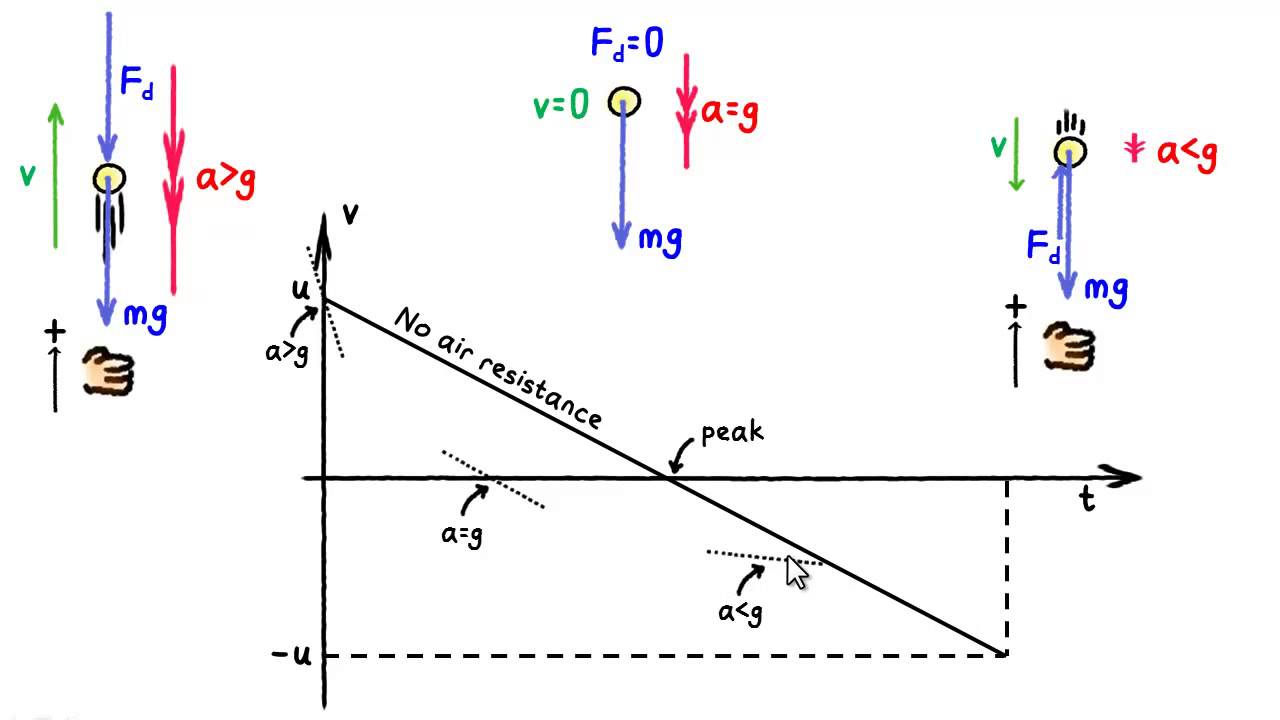A ball is tossed up from a tower #"50 m"# above the ground. If the ball has an initial velocity of #"30 m/s"#, how long will it take to hit the ground if #g = -"9.81 m/s"^2#. Help!?
1 Answer
Here's what I got.
Explanation:
The cool thing to consider here is the fact that you can break the motion of the ball into three parts
- from
#"50 m"# above the ground to max height#-># going up- from max height to
#"50 m"# above the ground#-># going down- from
#"50 m"# above the ground#-># going down
So if you throw the ball from a height of
So, if the velocity of the ball is equal to
#"0 m s"^(-1) = v_0 - g * t_ "up from 50 m"#
which, in your case, is equal to
#"0 m s"^(-1) = "30 m s"^(-1) - "9.81 m s"^(-2) * t_ "up from 50 m"#
This means that the ball will reach the peak of its trajectory in
#t_ "up from 50 m" = (30 color(red)(cancel(color(black)("m"))) color(red)(cancel(color(black)("s"^(-1)))))/(9.81color(red)(cancel(color(black)("m"))) "s"^color(red)(cancel(color(black)(-2)))) = "3.06 s"#
Now, when the ball reaches
This happens because the ball is in free fall from its maximum height, so the time it takes for the ball to reach
#"time up from 50 m to max height = time down from max height to 50 m"#

So
#t_"down to 50 m" = "3.06 s"#
So you know for a fact that when the ball reaches
This means that for the last portion of the movement, you can look consider a ball thrown from
You can find the impact velocity by using the equation
#v_f^2 = v_0^2 + 2 * g * h#
This will get you
#v_f = sqrt(("30 m s"^(-1))^2 + 2 * "9.8 m s"^(-2) * "50 m")#
#v_f = "43.37 m s"^(-1)#
This means that you have
#v_f = v_o + g * t_ "50 m to ground"#
which gets you
#t_"50 m to ground" = (43.37 color(red)(cancel(color(black)("m"))) color(red)(cancel(color(black)("s"^(-1)))) - 30 color(red)(cancel(color(black)("m"))) color(red)(cancel(color(black)("s"^(-1)))))/(9.81color(red)(cancel(color(black)("m"))) "s"^color(red)(cancel(color(black)(-2))))#
#t_"50 m to ground" = "1.36 s"#
Therefore, you can say that the total time needed for the ball to hit the ground is
#t_"total" = t_"up from 50 m" + t_ "down to 50 m" + t_ "50 m to ground"#
#t_ "total" = "3.06 s" + "3.06 s" + "1.36 s"#
#color(darkgreen)(ul(color(black)(t_"total" = "7.5 s")))#
I'll leave the answer rounded to two sig figs, but keep in mind that you only have one significant figure for your values.

